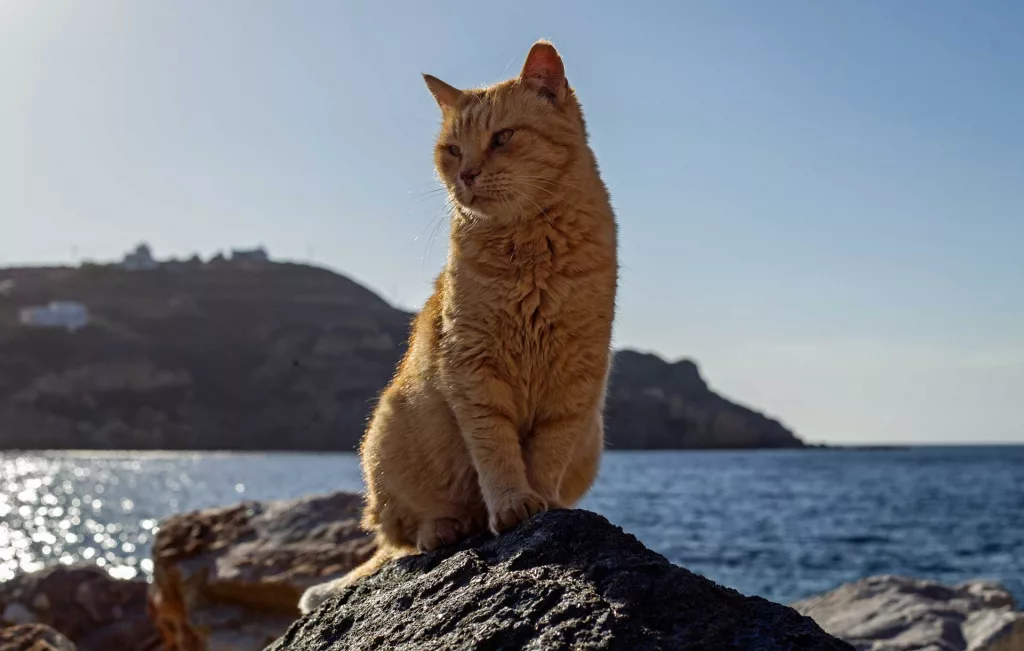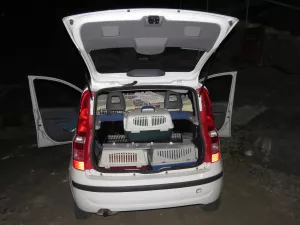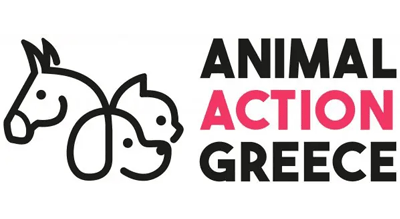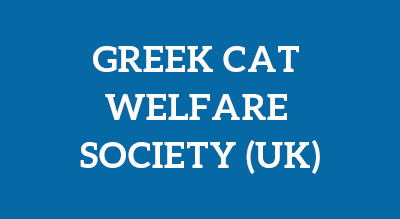Focus on the Fisherman’s Colony
In our small village of Kini, we have no fewer than eight feeding stations for the strays of the area. Our volunteers visit each one every day to provide food and fresh water for the cats who feed there, and also monitor their general health and keep a look out for any newcomers for on-going TNR. Our Fisherman’s Colony is probably one of our most established colonies and here, our founder Jacky Storey looks back at how it all started.
February 2014 – it’s cold and damp in the tiny village of Kini and in winter at around six in the evening it is just getting dark. The fisherman’s cats are gathering on the rocks outside his family house in the hope of getting a meal.
We have other ideas.
Back then, we were a new organisation trying to spread the word about the benefits of sterilising the local stray cats. We were working with island vets, who were volunteering their time, and along with friends and helpers, we were rounding up the village strays. It was the start of a sterilisation programme that has lasted more than ten years and will continue.
We were delighted that the owner of one of the fishing boats had contacted us about his cat colony that was growing exponentially. He was happy to have a few cats around to control rats and snakes and had bits of fish from his catch and scraps from his kitchen he could feed to them. (In those days most cats were fed pasta boiled with scraps – not an ideal diet – but his cats looked good. The raw fish diet suited them!) But things were getting out of hand; his cats were breeding too effectively!
So we set an appointment with the vets, told the fisherman not to feed until we got there and arrived with a selection of traps and cages to round the cats up for sterilising. It wasn’t difficult. We didn’t need to be selective. None of the cats had been sterilised. It was very expensive back then and with cat lovers feeding colonies of around twenty cats each, seeing a clipped ear – the sign that a cat had been sterilised – was rare.
These cats had never seen traps or cat carriers before and quickly we caught most of them. Of course they complained – but it was for everyone’s benefit and they were going to have a much happier life free from the endless round of fighting and rearing kittens.
It was hard work. This colony lived on cliffs and the house where they were fed was at the top of about fifty steps. The next day we collected them from the vet, checked them over and all of them were recovered enough to be released – none the worse for their experience.
- A good night’s TNR work!
- The tricky business of transfer from the drop cage!
Fast forward twelve years…
Many of these cats are still alive. Every morning our volunteers feed them at a feeding station and provide fresh food and water. They know the sound of the car and arrive, slowly emerging from the rocks, making their way downwards to see if anything interesting is on offer. The cheerfully decorated feeding station, brainchild of one of our local and highly supportive vets, has a QR code that when scanned shows details of the cats that feed there (we try to name them all). The cats are in superb condition. The mix of dry food we provide, supplemented by raw fish from the fisherman is a testament to the benefits of Omega 3 and they are plump with glossy coats. We give them parasite, veterinary and dental care if they need it, but on the whole, they are a healthy colony.
The fisherman’s cats have lived all their lives on the streets. But they are in a safe nearly traffic-free zone. There are about eight of them left and the other boat users are happy to have them around. They are a tight-knit group, who keep other cats out and there are no snakes, mice or rats to be seen anywhere close! They have a stable life. Some of them like to be petted and will approach tourists and locals to check if they are cat friendly. Otherwise, they have their favourite spots among the rocks, where they can sunbathe or find shelter according to the season.

It’s a pleasure to be seeing them every day as they stroll out to greet us.
TNR sometimes seems like tedious thankless work. We get scratched, bitten, wet and cold. Wriggling cats in traps are heavy – they are ungrateful patients. But we persist. Every month in the cooler seasons we catch and sterilise around fifty cats. We are grateful to Animal Action Hellas and the Greek Cat Welfare Society who have been giving us regular funding during the past years, to our monthly sponsors and other donors, who help us to survive, improve the quality of our cat care and help more strays. Also a big thank you to Jo, Susan and our other volunteers who keep up their enthusiasm and give so freely of their time.
The welcome we get each morning from the cats at the fisherman’s colony makes it all seem worthwhile.






